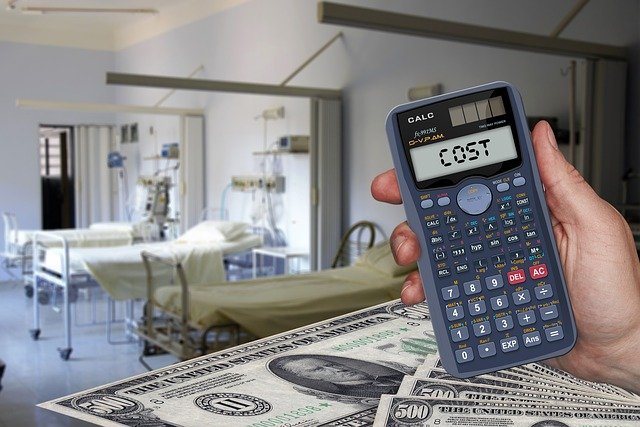Understanding Depression Tests: A Step Toward Better Mental Health
Depression is a common but serious mental health condition that affects millions worldwide. Recognizing the signs early is critical, and one of the most accessible ways to begin this process is through a depression test. These tests serve as a preliminary screening tool to help individuals assess their emotional state and decide whether professional help is needed. In this article, we’ll explore what a depression test is, how it works, and why it’s a valuable resource for mental wellness.

Depression affects millions worldwide, yet many people suffering from this condition remain undiagnosed and untreated. Depression tests offer a structured approach to identifying symptoms and assessing their severity, serving as an important first step toward proper treatment and recovery. These screening tools help both individuals and healthcare providers recognize when professional intervention might be needed, potentially improving outcomes through earlier detection and appropriate care.
Why Take a Depression Test?
Depression tests provide an objective measure of symptoms that might otherwise be dismissed or normalized. Many people experiencing depression may not recognize their symptoms as part of a treatable condition, instead attributing them to temporary stress, personal weakness, or just “the way things are.” A structured assessment helps validate these experiences and puts them into a clinical context.
Taking a depression test can also help track changes in mental health over time. For those already diagnosed with depression, regular assessments can measure treatment effectiveness and monitor for potential relapses. This tracking function allows for timely adjustments to treatment plans when needed.
Additionally, depression tests can serve as a starting point for difficult conversations. Many people find it challenging to discuss mental health concerns with healthcare providers or loved ones. Having concrete results from a screening tool can make these conversations easier to initiate and more productive once started.
How Depression Tests Work
Most depression screening tools use a series of questions about thoughts, feelings, and behaviors experienced over a specific timeframe, typically the past two weeks. Questions often address common depression symptoms such as persistent sadness, loss of interest in activities, changes in sleep patterns, difficulty concentrating, and thoughts of death or suicide.
The Patient Health Questionnaire-9 (PHQ-9) is among the most widely used depression screening tools in primary care settings. It consists of nine questions corresponding to the diagnostic criteria for major depressive disorder. Each question is scored from 0 to 3 based on symptom frequency, with total scores indicating depression severity from minimal to severe.
Other common screening tools include the Beck Depression Inventory (BDI), Hamilton Depression Rating Scale (HAM-D), and the Geriatric Depression Scale (GDS) for older adults. Each test has specific strengths and applications, though all aim to quantify depressive symptoms in a standardized way.
Understanding the Importance of Early Detection
Early detection of depression can significantly improve treatment outcomes and quality of life. When identified in its earlier stages, depression may respond better to interventions, potentially requiring less intensive treatment approaches. This early intervention can help prevent the condition from becoming more severe or chronic.
Depression often coexists with other health conditions and can complicate their management. For example, depression frequently occurs alongside chronic illnesses like diabetes, heart disease, and cancer, potentially worsening outcomes for these conditions. Early detection through screening allows healthcare providers to address both the physical and mental health aspects of a person’s wellbeing.
Perhaps most critically, early detection through depression screening can help identify individuals at risk for suicide. Depression is a major risk factor for suicidal thoughts and behaviors, and timely intervention can be life-saving. Screening tools typically include questions specifically addressing suicidal ideation, creating opportunities for immediate intervention when necessary.
Taking Action After a Depression Test
Receiving results from a depression test is just the beginning of the journey toward better mental health. If screening indicates possible depression, the next step typically involves a comprehensive evaluation by a qualified healthcare provider. This assessment may include a detailed medical and psychiatric history, physical examination, and possibly laboratory tests to rule out medical conditions that can mimic depression.
Based on this evaluation, treatment options might include psychotherapy (talk therapy), medication, lifestyle modifications, or a combination of approaches. Cognitive-behavioral therapy (CBT) has strong evidence supporting its effectiveness for depression, while medications like selective serotonin reuptake inhibitors (SSRIs) are commonly prescribed pharmaceutical treatments.
Self-care strategies also play an important role in managing depression. Regular physical activity, adequate sleep, healthy nutrition, stress management techniques, and social connection can all support mental wellbeing. These approaches may be recommended alongside professional treatment or as preventive measures for those with milder symptoms.
This article is for informational purposes only and should not be considered medical advice. Please consult a qualified healthcare professional for personalized guidance and treatment.




